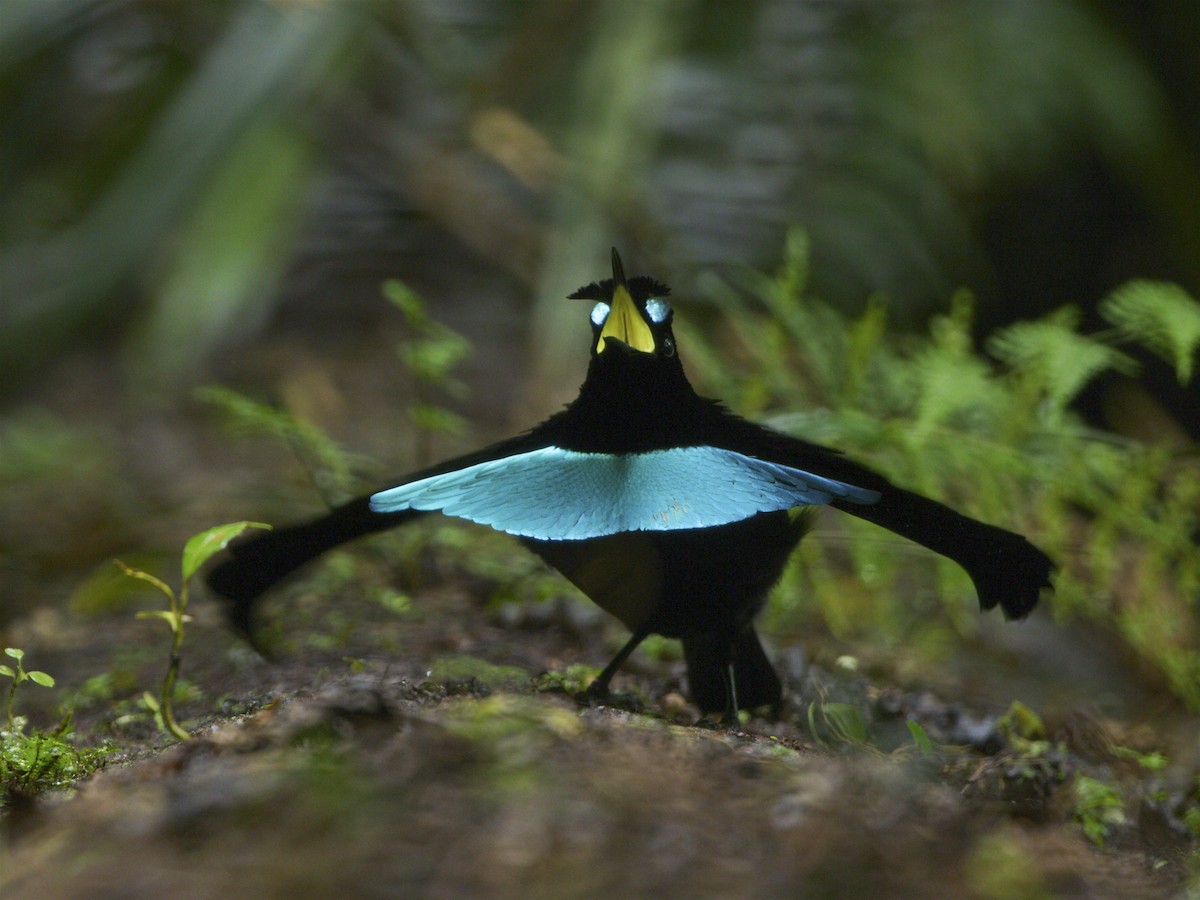“The courtship dance is different. The vocalizations are different. Even the shape of the displaying male is different,” says Scholes. “For centuries, people thought the Superb Bird-of-Paradise in the mountains of the Bird’s Head region was a little different from the other populations throughout the rest of New Guinea, but no one had ever documented its display in the 200 plus years this bird has been known to occur there.”
“Even after many trips to the region, we’d never seen the Arfak birds do their courtship display,” says Birds-of-Paradise Project co-leader Tim Laman. “When we finally located a display site and saw a male open his cape for the first time, what we saw was a complete surprise!”
When expanded for courtship display, the western male’s raised cape creates a completely different appearance—crescent-shaped with pointed tips rather than the oval shape of the widespread form of the species. The way the western male dances for the female is also is distinctive, being smooth instead of bouncy.

Scholes and Laman have been studying and filming birds-of-paradise behavior in the Arfak Mountains for the past 13 years. They first uncovered this population’s unique courtship behaviors in June 2016 and returned again this year to gather additional documentation for a forthcoming scientific paper.
A recently published independent genetic study confirms the visual and behavioral evidence collected by Scholes and Laman. A team of researchers from Sweden and Australia used DNA samples from museum specimens to examine the evolutionary relationships among Superb Bird-of-Paradise forms throughout New Guinea. Their research, published online in the Zoological Journal of the Linnean Society, found that the western form is more genetically distinct from the widespread form than previously thought. They, too, say the western population should be recognized as a full species called Lophorina neidda inopinata.
“The timing of this DNA-based study is perfect,” said Ed Scholes, “because it is great to have our field observations supported by solid genetic evidence. We really appreciate this in-depth study of the evolutionary relationships among the different forms of Superb Bird-of-Paradise.”
The Cornell Lab’s Birds-of-Paradise Project (birdsofparadiseproject.org) is a research and education initiative to document, interpret, and protect the birds-of-paradise, their native environments, and the other biodiversity of the New Guinea region—one of the largest remaining tropical wildernesses on the planet.
Cornell Lab of Ornithology Press Release published June 29, 2017.


